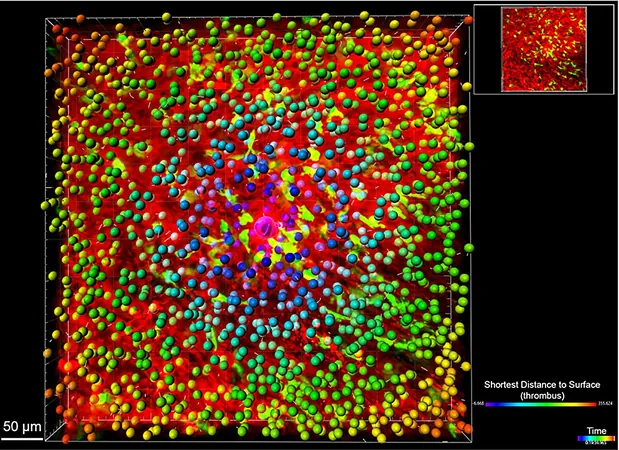
Groundbreaking Study Reveals Cell Death as Key Player in Glioblastoma Growth
2025-03-27
Author: John Tan
Study Overview
In a startling new development in cancer research, a recent study led by Northwestern Medicine has shed light on glioblastoma, one of the most formidable types of brain cancer. With a dismal five-year survival rate of just 6.9% according to the National Brain Tumor Society, glioblastoma has long posed a significant challenge for both patients and researchers alike.
Historical Perspective on Necrosis
Historically, the connection between glioblastoma and cell death, known as necrosis, was acknowledged but its implications remained murky. Daniel J. Brat, MD, Ph.D., and chair of Pathology at Northwestern, led the study that has now established cell death as a crucial driver of glioblastoma progression.
New Insights into Tumor Growth
Brat raised skepticism about traditional views that portrayed necrosis as merely a consequence of cancer outpacing its blood supply. "It's been a common belief that the cancer is growing so wildly that it simply outgrows its nourishment," he remarked. However, Brat contends that necrosis may actually serve as a significant tipping point in tumor development and behavior, a notion supported by over a century of observations correlating necrosis with poorer outcomes for patients.
Research Methodology
The vital research involved observing glioblastomas in mice, where researchers deliberately restricted blood flow to a tumor through a single blood vessel. Using advanced intravital microscopy, they made a groundbreaking discovery: within the poorly perfused centers of these tumors, rapid growth occurred alongside a surge of pro-tumor immune and stem cells.
Implications of the Findings
"What we observed is that necrosis within gliomas spurs outward tumor expansion," Brat explained. Contrary to prevailing theories, it’s not the tumor exceeding its blood supply that fuels its expansion, but the degraded blood supply actively reshaping the tumor environment to enable this aggressive growth.
Future Research Directions
This innovative perspective opens a world of possibilities for glioblastoma research. With these findings, researchers now have a new model to further explore the intricate mechanisms behind glioblastoma's relentless progression. Brat intends to delve deeper into this model in the coming years, aiming to investigate aspects such as stem cell enrichment, the formation of new blood vessels, and transformations in the immune landscape following necrosis.
Conclusion
In light of these revelations, the scientific community may soon redefine strategies in the battle against glioblastoma, shifting focus from treating symptoms to understanding the underlying biological processes that enable this lethal cancer to thrive. As researchers continue to unravel the complexities of glioblastoma, patients and families hold onto hope that these insights will pave the way towards more effective treatments in the future.





 Brasil (PT)
Brasil (PT)
 Canada (EN)
Canada (EN)
 Chile (ES)
Chile (ES)
 Česko (CS)
Česko (CS)
 대한민국 (KO)
대한민국 (KO)
 España (ES)
España (ES)
 France (FR)
France (FR)
 Hong Kong (EN)
Hong Kong (EN)
 Italia (IT)
Italia (IT)
 日本 (JA)
日本 (JA)
 Magyarország (HU)
Magyarország (HU)
 Norge (NO)
Norge (NO)
 Polska (PL)
Polska (PL)
 Schweiz (DE)
Schweiz (DE)
 Singapore (EN)
Singapore (EN)
 Sverige (SV)
Sverige (SV)
 Suomi (FI)
Suomi (FI)
 Türkiye (TR)
Türkiye (TR)
 الإمارات العربية المتحدة (AR)
الإمارات العربية المتحدة (AR)